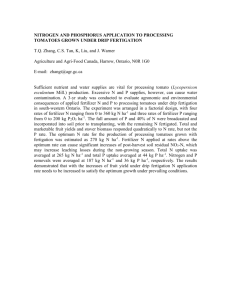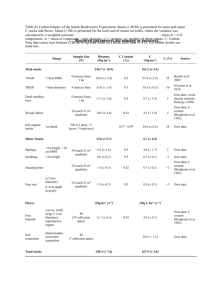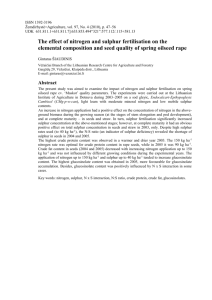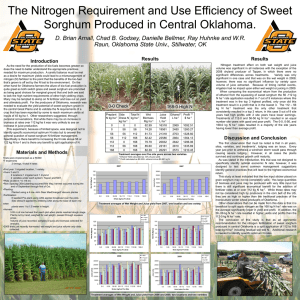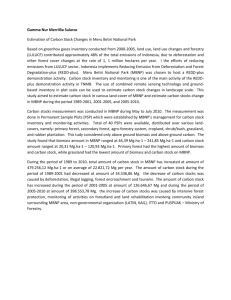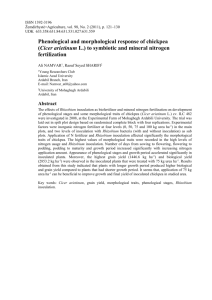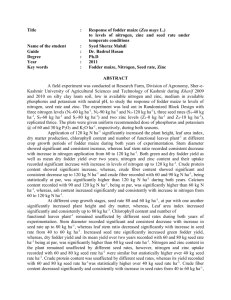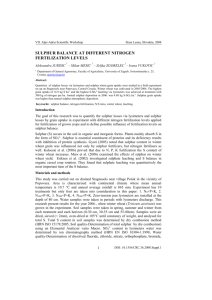Appendix I: Sources of estimates for carbon per hectare Costa Rica
advertisement
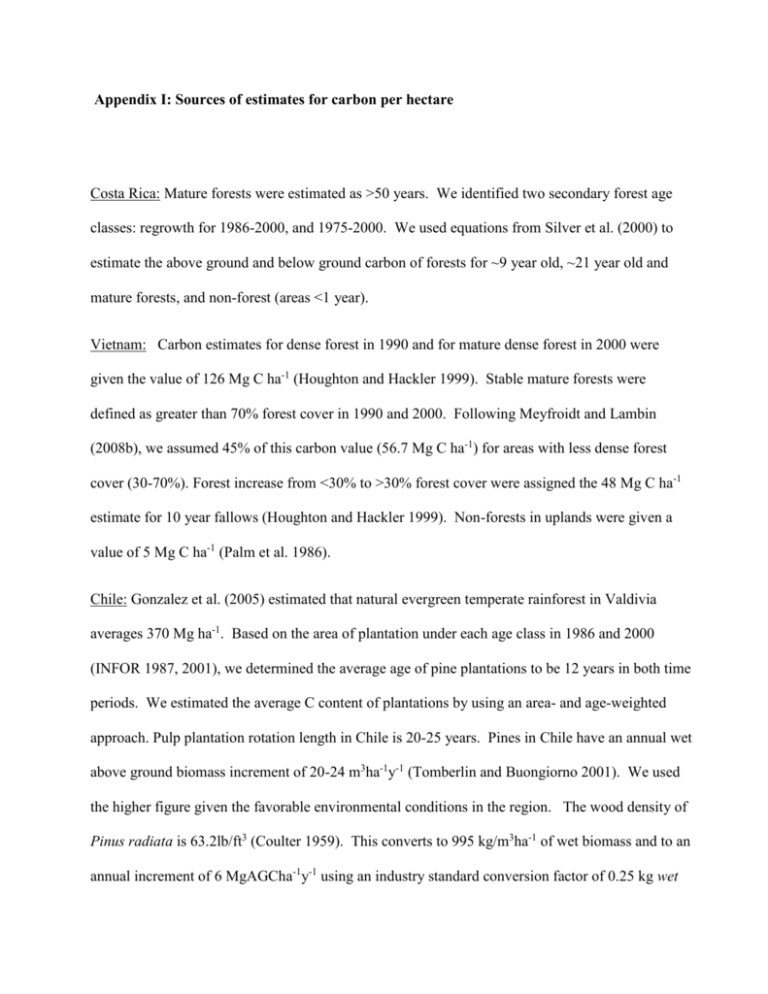
Appendix I: Sources of estimates for carbon per hectare Costa Rica: Mature forests were estimated as >50 years. We identified two secondary forest age classes: regrowth for 1986-2000, and 1975-2000. We used equations from Silver et al. (2000) to estimate the above ground and below ground carbon of forests for ~9 year old, ~21 year old and mature forests, and non-forest (areas <1 year). Vietnam: Carbon estimates for dense forest in 1990 and for mature dense forest in 2000 were given the value of 126 Mg C ha-1 (Houghton and Hackler 1999). Stable mature forests were defined as greater than 70% forest cover in 1990 and 2000. Following Meyfroidt and Lambin (2008b), we assumed 45% of this carbon value (56.7 Mg C ha-1) for areas with less dense forest cover (30-70%). Forest increase from <30% to >30% forest cover were assigned the 48 Mg C ha-1 estimate for 10 year fallows (Houghton and Hackler 1999). Non-forests in uplands were given a value of 5 Mg C ha-1 (Palm et al. 1986). Chile: Gonzalez et al. (2005) estimated that natural evergreen temperate rainforest in Valdivia averages 370 Mg ha-1. Based on the area of plantation under each age class in 1986 and 2000 (INFOR 1987, 2001), we determined the average age of pine plantations to be 12 years in both time periods. We estimated the average C content of plantations by using an area- and age-weighted approach. Pulp plantation rotation length in Chile is 20-25 years. Pines in Chile have an annual wet above ground biomass increment of 20-24 m3ha-1y-1 (Tomberlin and Buongiorno 2001). We used the higher figure given the favorable environmental conditions in the region. The wood density of Pinus radiata is 63.2lb/ft3 (Coulter 1959). This converts to 995 kg/m3ha-1 of wet biomass and to an annual increment of 6 MgAGCha-1y-1 using an industry standard conversion factor of 0.25 kg wet biomass to each kg of dry carbon. Twelve years minus 1 year for planting seedlings gives an average of 66 Mg above ground C ha-1 in the region. Studies throughout South America have shown that soil carbon decreases after the establishment of pine plantations on grassland or broadleaf forest soils, and this decrease continues for decades over multiple rotations (Turner and Lambert 2000; Farley et al. 2004). Chapela et al. (2001) estimate an average of 30% loss between 10 and 20 years, producing a value of 105 Mg C ha-1. Soil carbon in natural forests of this region has been estimated as 150 Mg C ha-1 (Gayoso and Schlegel 2003). Established pine plantation average of 171 Mg C ha-1 above and below ground. Sparse vegetation in Chile has an estimated 31% of the carbon of forest soil or 46 Mg C ha-1 (Matus et al. 2008). Ecuador: A study close to the Pangor Basin at the same elevation, estimated natural forest carbon to be 204 MgAGCha-1 and 86.8 Mg below ground C ha-1 for a total of 291 Mg C ha-1 (Moser et al. 2011). Soil carbon for non-forest/non-páramo land was found to be 12% lower than natural forest soil carbon (Rhoades et al. 2000) for a value of 77 Mg C ha-1 plus an averaged 19 MgAGCha-1 for grass and shrubs (Gonzalez et al. 2005) giving a total of 95 Mg C ha-1. Chapela et al. (2001) found páramo soils to contain 600 Mg C ha-1 (depth 1 m). Pulp plantations have an average rotation length of 25 years (Farley 2007). Allowing one year post harvest, one year of seedling establishment, and 23 years growth, and assuming plantation patches of different ages exist in the landscape, we estimated that plantations across the landscape have an average age of 12.5 years. In the Ecuadorian highlands, pines sequester only an average of 2-3 Mg above ground C ha-1y-1 (Hofstede and Aquirre 1999). Using 2.51, we estimate that pines have an average of 30 Mg above ground C ha-1. After one rotation under pine plantation, páramo loses an average of 30% of soil carbon, or 420 Mg C ha-1 (Chapela et al. 2001). Therefore, we used an estimate of 457 total Mg C ha-1 for páramo converted to pine plantation. Agricultural land were estimated to have lost 30% of soil carbon after establishment of pine, giving a carbon value of 60.2 Mg below ground C ha-1 for a total carbon value of 90.6 Mg C ha-1.
